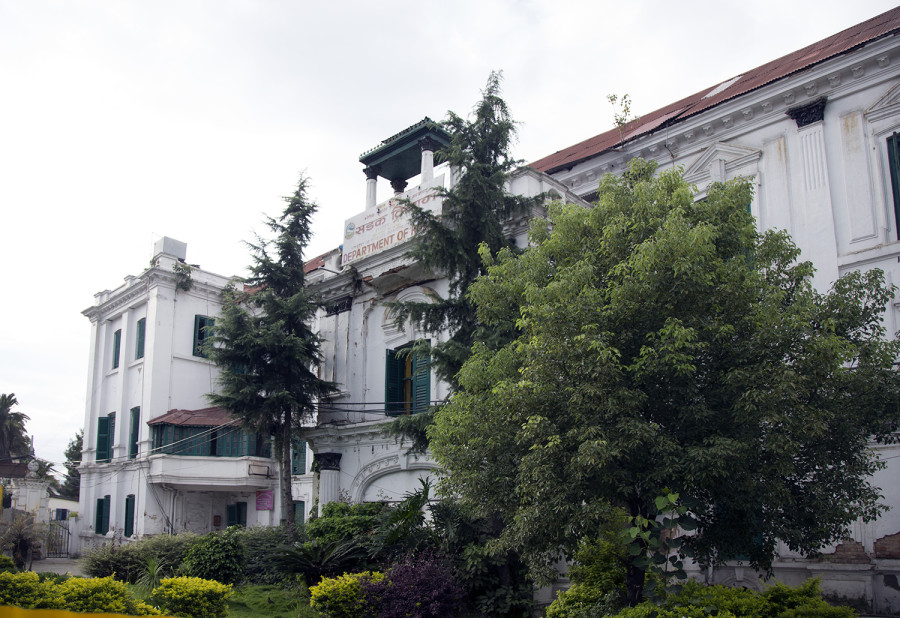Valley
How Road Department officials traced their building’s ownership history
The department had abandoned its building and was preparing to build a new building in Minbhawan—until it found out it didn’t have to.
Prithvi Man Shrestha
When 2015’s deadly earthquakes wrecked the administrative building of the Department of Roads, the authorities were in a dilemma. The building was declared unsafe to work in, which meant they had to move. But the department was uncertain whether it should retrofit the building or look for another permanent location. The reason behind the confusion: No one knew whether the Babarmahal building belonged to the government or to Babar Shumsher Rana’s children.
While a decision was being contemplated, the department operated out of various rented buildings around Kathmandu. In June 2017, the department came to the decision that the building probably didn’t belong to the government, and hence decided to move the office elsewhere.
“We didn’t have any documents proving that the government owned the building, so we were preparing to build another building in Minbhawan,” said Shiva Hari Sapkota, spokesperson of the department, who was then the regional director of the department’s Central Region Regional Road Directorate.
Although literature could be found that Babar Shumsher had sold the building to the government after the Rana regime ended in 1951, the department was unable to prove public ownership, due to a lack of land ownership certificates.
“Nobody cared about ownership before the quake, as work was progressing without any hindrance,” said Rabindra Nath Shrestha, former director general of the department.
The department, however, decided to look for documents regarding ownership of the building. According to Sapkota, he approached officials from the Office of the Auditor General, which was also part of the Babarmahal building, to see if the auditing body had any documents.
During the search, a document with a plot number for the Babarmahal area was unearthed. The document, which the Post obtained, shows that the land was registered in the name of the government on December 8, 1988.
Following the discovery of this document, the department assigned its staff to coordinate with staffers from the Land Revenue Office and Survey Office to look for any other documents regarding building ownership.
The search, which went on for around six months, found documents showing that the department owned 1.1 ropanies of land and the Nepal government owned 20.11 ropanies of land around the Babarmahal area, within which the building was located.
While it is not clear when the first plot of land was registered in the name of the department, the second plot was found to have been registered in the government’s name on February 22, 2005.
After this discovery, the department checked if there were any pending cases at the courts. After finding no such case, the department began the process of bringing all of the land and the building in question under its direct ownership.
“After going through the necessary procedures, we managed to bring all land under the department's ownership. We now have a new land ownership certificate, which we have circulated to different sections of the department for record keeping,” said Sapkota.
The new land ownership certificate now states that 1.1 ropanies of land were registered by the department on August 12, 2018 and another 20.11 ropanies on January 5, 2018.
With this uncovering, the department has now abandoned its plans to build a new home for the Roads Department in Minbhawan. The National Reconstruction Authority has also decided to retrofit the old Roads Department building, instead of demolishing it, as it is an old palace building with archeological value.
On July 10, a retrofitting contract was awarded to a joint venture of GCGC/Ashi/Samanantar at a cost of around Rs860 million.
“The contractor should complete the work within two years,” said Narayan Pyakuryal, project director of the Central Level Project Implementation Unit at the reconstruction authority.
“After two years, once the retrofitting is complete, we will return to the old building,” Sapkota said.




 9.12°C Kathmandu
9.12°C Kathmandu










